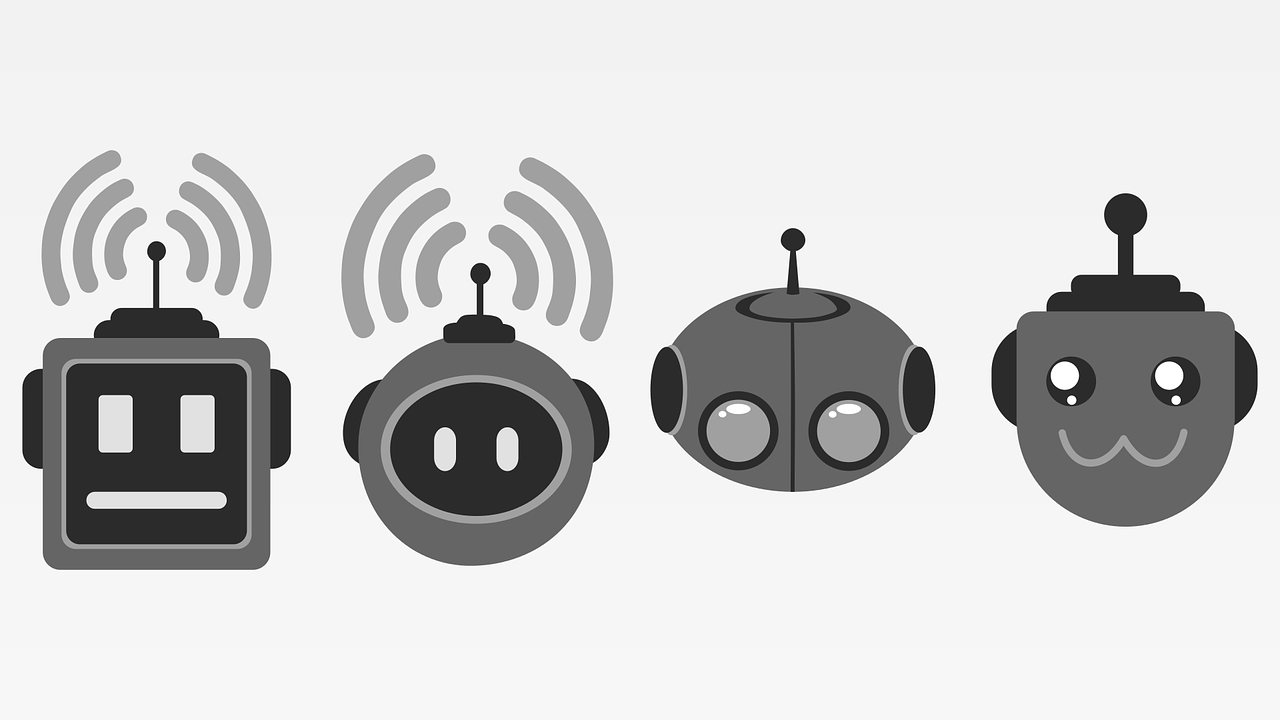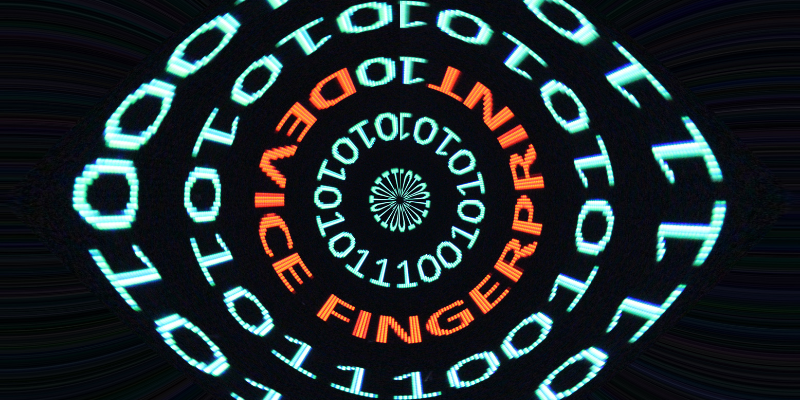In your internet use, you might have encountered a CAPTCHA (Completely Automated Public Turing test to tell Computers and Humans Apart) asking you to prove that you’re human and not a bot.
Such tests prove that, indeed, there are bots on the internet, and these bots are unwanted by a large number of sites. However, the million-dollar question is what are bots, and why are they unwanted by many websites?
What Are Internet Bots?
An internet robot, or bot in short, is a software application that mimics human behavior and automates repetitive tasks over the internet. Bots are used to perform what would otherwise be cumbersome and time-consuming for humans.
This is because bots execute instructions given at very fast speeds, with high accuracy, and can handle large volumes of tasks. Additionally, they do this without the need for human intervention.
Some of the tasks performed by bots include customer service, web crawling, website indexing, web scraping, and fraud detection, among other things.
An example of a useful bot is the Googlebot which is used to crawl the internet and index websites for them to show up on search engine results. Bots are a crucial part of the internet; you’re bound to encounter bots or use a service made available by bots.
In fact, according to research done by Statista, as of 2021, 42.3% of all internet traffic was from bots. However, the report points out the grim reality of internet bots.
From the same report, as of 2021, 27.7% of internet traffic was from bad bots, while good bots accounted for 14.6% of internet traffic. Therefore it is safe to say that bots are often used to do more harm than good. Remember, bots can be used to do good or bad.
Malicious bots traffic is detrimental to websites or applications as they can scan for vulnerabilities, harvest user email addresses, spread spam and malware, execute denial of service attacks on websites, crack passwords and execute cyber-attacks.
Why One Needs to Identify and Mitigate Bots?

As much as getting traffic to your website is good, you don’t want that traffic to come from bad bots. It is recommended that the application identify and block malicious traffic from bots. Some of the reasons to do this include the following:
#1. Website Performance
Bots can make thousands of requests to a website and overload the website’s servers. This can lead to the websites taking too long to load or becoming completely unavailable to legitimate human users.
#2. Website Analytics
Traffic from bots can lead to wrong web analytics by generating fake traffic and increasing page views. This can lead to getting wrong data on visits to a site, average user session duration, location of visitors to a site, and the number of visitors who clicked links on the page.
#3. Security
Some malicious bots can compromise the security of websites by spreading malware to users, which can lead to costly data breaches and privacy infringement. Bots can also capture sensitive user information being entered on websites and use it to commit crimes such as identity fraud and account takeover attacks.
#4. Inventory Hoarding
Malicious bots can target e-commerce platforms with limited inventory and make available items unavailable to users. To do so, bots infiltrate an e-commerce website and fill shopping carts with available items without actually buying them. This, in turn, leads to the items being unavailable to legitimate users, and companies may mistakenly restock their inventory thinking that what was available is going to be bought.
#5. Click Fraud
Ad-serving websites earn revenue when users click on the ads being served. Malicious bots can emulate this behavior and click on ads being served on a page creating the impression that the clicks are coming from legitimate users.
Whereas this may result in a short-term revenue boost for a website, advertising networks can detect bot clicks, and once a website is found to use bot clicks, thus committing click fraud, a site and the owner may be banned from their advertising network.
It is important to find a way to identify traffic from bad bots and stop them. An effective way to do this is through bot detection and mitigation software.
How Does a Bot Detection and Mitigation Software Help?
As much as almost half of the internet traffic is from bots, many of which are harmful, users are not completely helpless against these malicious bots. Bot detection and mitigation software can help users avoid being victims of malicious bots.
Bot detection and mitigation software identifies bot traffic and monitors their activity on a site. It then categorizes and separates good bot traffic from malicious bot traffic and completely blocks malicious bots bot traffic.
This prevents malicious bots from accessing or interacting with anything on your website or network. However, good bots such as Googlebot are let in and allowed to access a website or network.
This has the advantage of ensuring the services on a website or network are not made unavailable to legitimate users.
Bot detection and mitigation software also ensure the website’s performance is optimal, security is not compromised, and website analytics only consider legitimate users.
Top Features to Look For in Bot Detection and Mitigation Software
Some of the top features to look for in any bot detection and mitigation software include:
#1. Device Fingerprinting
This involves collecting user information such as the device, browser, IP address, and other characteristics to create a ‘fingerprint’ for that user. This allows the detection and blocking of bots.

If it is noticed that multiple requests are coming from the same device, which is typical bot behavior, the bots are blocked. Malicious bots can also be blocked if a device tries to use a different fingerprint from the one associated with it.
#2. Scalability
A bot detection and mitigation software should be able to detect and block high traffic from malicious bots. It should also be able to protect multiple networks and websites without causing any latency or reduction in the website or network performance.
#3. Accuracy and Speed
Bots are constantly improving and can emulate the behavior of human users on a site. Therefore, the mitigation software must be able to detect such bots with high accuracy and speed without blocking other real users.
It should also implement features such as machine learning to learn from malicious bots and adapt to handle new and emerging bots.
#4. Customization
Bot mitigation software should be customizable, allowing users to determine actions taken when malicious bots are detected in a network or website. It should also easily integrate with available systems, keep a record of known malicious bot IP addresses, and block them.
#5. Analytics and Reporting
Bot mitigation software should provide users with in-depth analytics on the amount of bot traffic detected, the types of bots detected, and the action taken to stop them.

The above are key considerations before investing in bot mitigation software. Here is the bot detection and mitigation software to make your selection even easier.
Cloudflare Bot Management
Cloudflare Bot Management is a bot detection and mitigation software that utilizes behavioral analysis and machine learning to detect and block malicious bot traffic from networks and websites.
It also performs fingerprinting based on millions of characteristics to classify bots accurately and block malicious bots. This allows Cloudflare to effectively block malicious bots without subjecting users to CAPTCHAs which might discourage some users from using your services.
Cloudflare bot management can be deployed easily and automatically recommends rules users can utilize to block malicious bots.
It also allows users to configure and customize bot management rules to serve their unique needs. It also provides users with in-depth bot analytics allowing them to analyze, understand and learn from bot management traffic logs.
Aside from its high accuracy in bot detection and mitigation, Cloudflare bot management has ultra-low-latency bot defenses which ensure bot management does not compromise the performance of applications.
DataDome
DataDome is an AI-powered online fraud and bot management software recently recognized as the leader in customer satisfaction by G2 Grid Report for Bot Detection and Mitigation. It is used by companies such as Reddit, Asus, Rakuten, and Tripadvisor.
According to DataDome, 50% of users that pass traditional CAPTCHAs are bots, and therefore, it identifies and blocks bots without the need for traditional CAPTCHAs, which are not very effective.
In case a user needs to fill a CAPTCHA, DataDome provides them with their own CAPTCHA. Aside from that, DataDome is designed to offer automatic bot detection and mitigation without user intervention. Once users configure bots allowed on their websites or networks, DataDome takes over and does all the heavy lifting.
It also provides users with in-depth insights and analytics and allows them to analyze 30 days of live traffic data and get real-time attack reports. DataDome is very light, easy to install, and requires no code to be integrated into applications and networks.
HUMAN Bot Defender
Human Bot Defender is a behavior-based bot management solution that combines intelligent fingerprinting, behavioral signals, and predictive analysis to detect bots on websites, mobile applications, and API endpoints.
Bots are detected and blocked without users needing to solve CAPTCHAs to verify whether they are human. This ensures that only real humans access and interact with online applications and services.
Human bot defender is easy to use and deploy and easily integrates with cloud solutions, load balancers, web servers, middlewares, eCommerce platforms, user identity platforms, and serverless and cloud frameworks.
It also offers real-time analytics allowing users to analyze and gain insights into the traffic to their applications and bots that have been blocked. Some companies using Human Bot Defender include Fiverr, Calm, Airtable, and Crunchbase.
Radware Bot Manager
Radware Bot Manager uses user behavior analysis, dynamic turing tests, collective bot intelligence, IP reputation feed, intent-base analysis, device and browser fingerprinting, Blockchain, and Machine learning to detect and block malicious bot traffic from the web, mobile applications, and API endpoints.
It easily integrates with existing infrastructure and offers users integration options in web server plugins, cloud connectors, JavaScript tags, DNS redirection, or virtual appliances.
Once deployed, users have access to a dashboard where they can analyze all traffic coming into their application, set up mitigation options, configure custom alerts, and get real-time reporting of traffic activity.
Organizations using Radware Bot Manager are also provided with data analysts to help them do real-time threat monitoring, analyze, investigate and respond to malicious threats, and access custom weekly reports.
Imperva Advanced Bot Protection
Advance Bot Protection (ABP), made by Imperva, a cybersecurity company, comes bundled in Imperva’s Web Application and API Protection (WAAP) stack.
Imperva collects and analyzes bot traffic and utilizes machine learning models to identify and stop bad bot behavior across networks. Discovered bad bots are stored on their known violator’s database, which helps hasten the bot detection and mitigation process.
ABP also utilizes advanced automation detection to detect malicious bots hiding behind shared IPs. Device fingerprints are also used in the detection, and users can customize multiple response options for incoming bots.
ABP protects users from attacks such as ad fraud, scalping, scraping, CAPTCHA defeat, and denial of service attacks.
Akamai Bot Manager
Akamai Bot Manager detects unknown bots immediately when interacting with an application using AI and Machine Learning models.
It uses user behavior analysis, automated browser detection and fingerprinting, HTTP anomaly detection, and high request rate, among other methods, to detect and stop malicious bots before they can cause any damage.
It also keeps and regularly updates a known-bot directory for fast detection and blocking of bots. Every traffic is analyzed and assigned a score of 0 (human) to 100 (definitely a bot).
Users can customize responses on different application endpoints based on how traffic scores on the scale. It also supports autotuning, which requires minimal human intervention.
Users can also customize response actions from the usual block and allow. For instance, users can choose to serve alternate content, a challenge, or slow down how content is served, among other options.
Such customizations make this bot manager stand out from the rest. Users are also provided with granular reporting analysis to help them get insights on the traffic coming into their applications.
Final Words
Bots have become ubiquitous on the internet, and if you have any website, application, or API endpoint accessible on the internet, it is bound to get traffic from bots.
With bad bots comprising the majority of bot traffic, it is important to stop malicious traffic before they cause harm.
Since CAPTCHA is no longer effective against sophisticated bots and can also make users avoid a site, it highly recommends that organizations embrace software bot detection and mitigation solutions like the ones highlighted.
Next, check out the best captcha-solving services/APIs for web scraping and automation.







